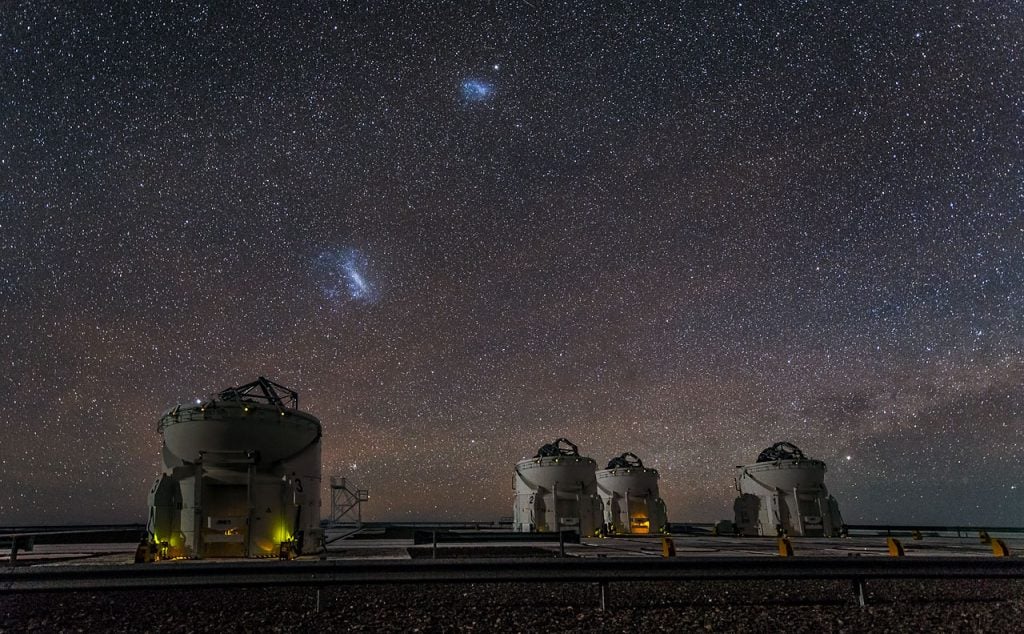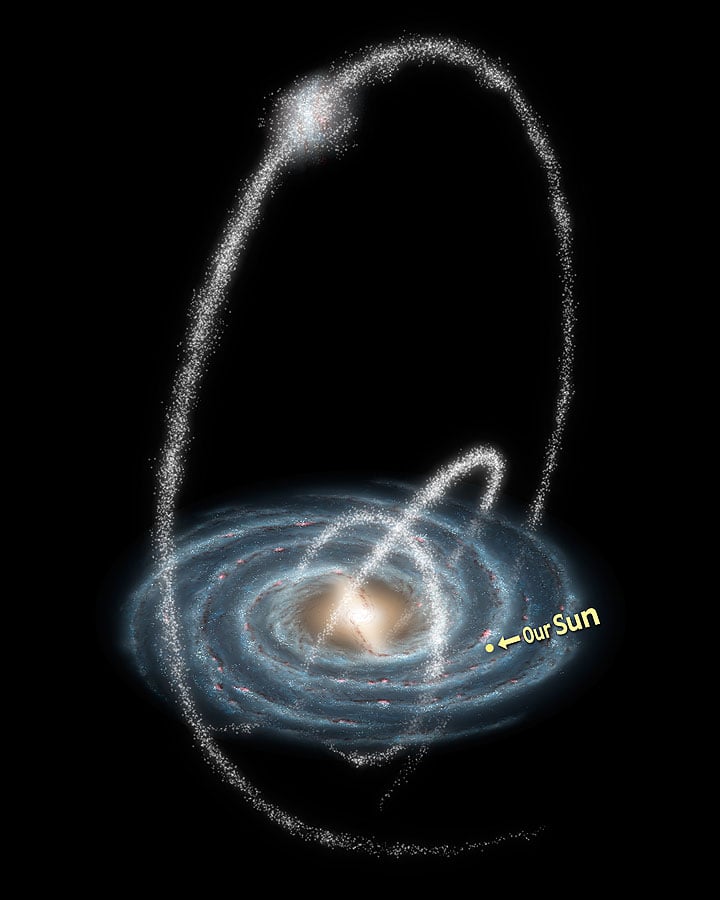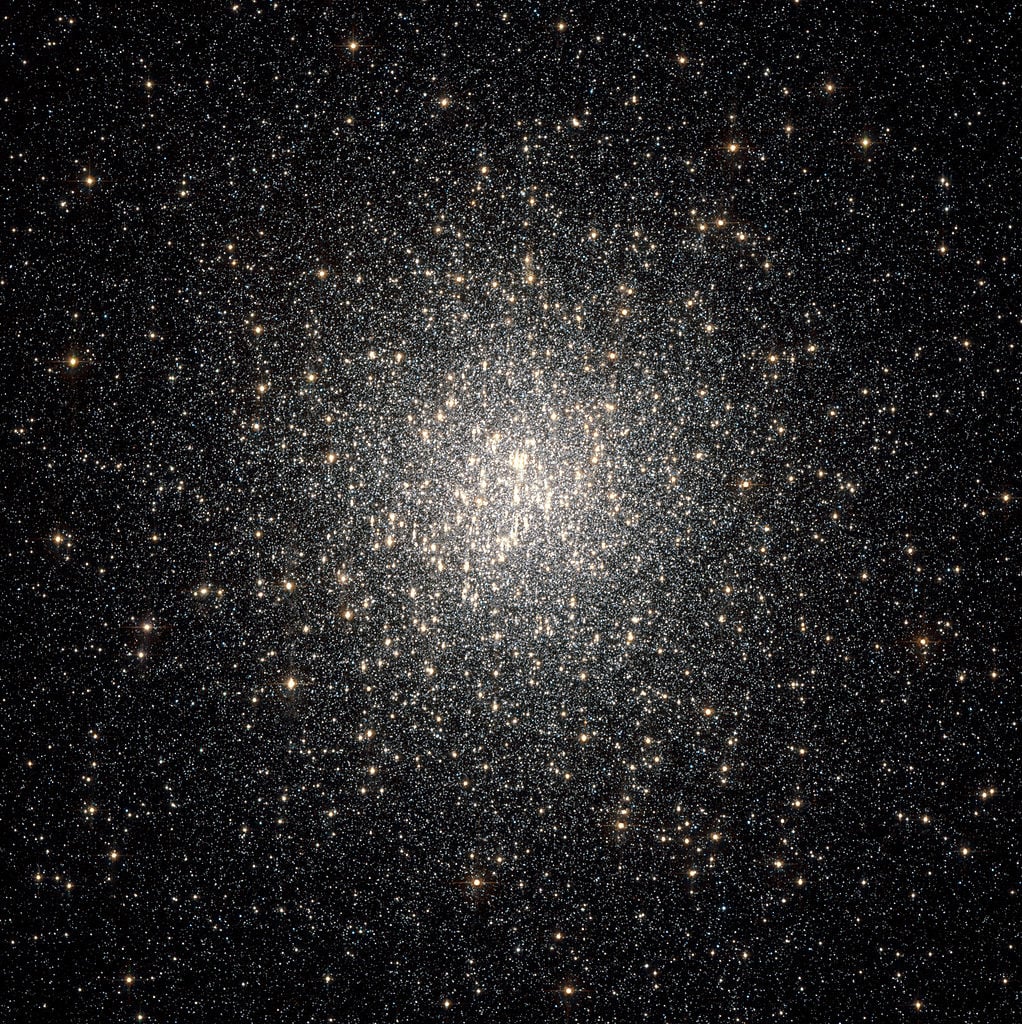Our galaxy's largest nearby companion is the Large Magellanic Cloud (LMC), a dwarf galaxy visible to the naked eye in the Southern Hemisphere. In recent years, new theoretical research and better observational capabilities have taught astronomers a great deal about our (not-so-little) neighbour. It's becoming increasingly clear that the LMC is helping shape the Milky Way's evolution.
"It was long assumed that our galaxy lives a quiet life of a hermit, with the nearest 'big' neighbour being Andromeda some 800 kiloparsecs away," says Eugene Vasiliev of the University of Cambridge. "But with the growing realization that the LMC is rather massive, and because of a peculiar 'historical moment' (it just passed near the pericentre of its orbit, where its velocity and the reciprocal effect it imparts on the Milky Way are highest), we can no longer ignore the perturbations to our Galaxy that it causes."
Weighing in at 10-20% the mass of our own galaxy, the LMC is worth taking seriously. Astronomers believe that it's on its first orbit around the Milky Way. Before that orbit began, it was a spiral galaxy in its own right. Interacting with the Milky Way distorted its spiral arms, though it still features a strong central bar as evidence of its previous structure.
The Milky Way, too, was changed by the interaction. The stars and stellar streams nearest to the LMC had their orbits deflected, for example, and there were larger, structural changes to the Milky Way too. Because the Milky Way isn't rigid, but rather made up of stars, dust, gas, and rock in varying densities, parts of the galaxy closer to the LMC were affected more than distant parts. The end result was a subtle-but-significant deformation in the shape of the galaxy, especially in the outer regions.
Astronomers should be able to see evidence of these changes, but it isn't an easy task. It's difficult to study the shape of our home galaxy, in large part because we can't take a snapshot of the entire Milky Way the way we can of a distant galaxy.
"Living inside our own Galaxy is indeed a boon and a bane for an astrophysicist," Vasiliev told *Universe Today*. "On the one hand, we can measure 3d positions and velocities for millions of stars with high precision, thanks to the Gaia astrometric satellite and numerous complementary ground-based spectroscopic surveys." That's something we can only dream of doing with distant galaxies, where we have "no information about the distribution of stars along the line of sight."
On the other hand, the Milky Way blocks our view of much of itself: interstellar dust filters out light in dense regions of the galaxy, hiding information from view. What's more, the furthest reaches of the galaxy are too distant for position and velocity surveys like Gaia to be accurate. Researchers therefore need to rely on models to fill in the gaps: they make predictions about the distant parts of the galaxy based on what we know about the nearer parts.
But that makes it hard to see the effects of the LMC on the Milky Way clearly. If there is a small error in the models – even a 5% overestimate of distances, for example – that would distort our picture of the Milky Way and would mask the perturbations caused by the LMC.
The fact that it's difficult doesn't mean astronomers are giving up. The LMC's size and proximity mean that its perturbations on our home galaxy ought to be quite significant. But how to find them?
The answer may lie, in part, in the most recent Gaia data, which showed a peculiar 'striped' pattern in the position and velocity of stars in the Milky Way's galactic halo. The halo is a spherical region that encircles the galactic disk and contains stars at a much lower density than the more populous disk does.
These stripe patterns are believed to be the traces left behind by long-dead galaxies that merged with the Milky Way in the ancient past, like the hypothesized Gaia-Enceladus galaxy.
When the LMC passed near to the Milky Way in the more recent past, it should have left distortions in those stripes, and that's what astronomers like Vasiliev are hoping to find. The halo is the perfect place to look, because the region's low density makes it more susceptible to changes caused by the LMC's flyby than the inner regions of the galaxy are.
In fact, our Solar System and the dense regions of the galactic disk are somewhat immune from the LMC's distortions. These areas of the Milky Way are compact, so when the LMC passed by, every star was shifted by the same amount. It wouldn't have left behind any visible distortion.
Vasiliev says it helps to think of the LMC's tug on the Milky Way in the same way we think of the Moon's tug on Earth: "An isolated lake does not have tides," he explains, "but the entire ocean does because the Moon's gravitational force varies across its spatial extent."
In the same way, we are unlikely to see LMC distortions in our local neighbourhood, but across the vast galactic halo, the effects become much more obvious.
"The further out we go, the more important the differential shifts become," says Vasiliev.
In April, Vasiliev publish a review of the current state of knowledge about the LMC's effects on the Milky Way. While there has been progress in recent years, there is still a lot more to learn, and the new Gaia data is paving the way for better models.
As for the future of the Milky Way and the LMC, they are, ultimately, on a collision course. The LMC will merge with the Milky Way in a few billion years, delivering more mass and metallicity to the Milky Way's halo. Of course, this dramatic event will be only a precursor to the even larger merger in store for the Milky Way, as the Andromeda Galaxy will, at that point, be on its final approach towards us.
If there is a moral to this story, it's that no galaxy is an island. The Milky Way's neighbours are helping to shape its past, present, and future, and astronomers are making an effort to take those effects into account as they study of our home galaxy.
Learn More:
Read the Review: Eugene Vasiliev, " The Effect of the LMC on the Milky Way System," Galaxies.
Featured Image: the Large Magellanic Cloud. Credit: ESO/VMC Survey.
 Universe Today
Universe Today



